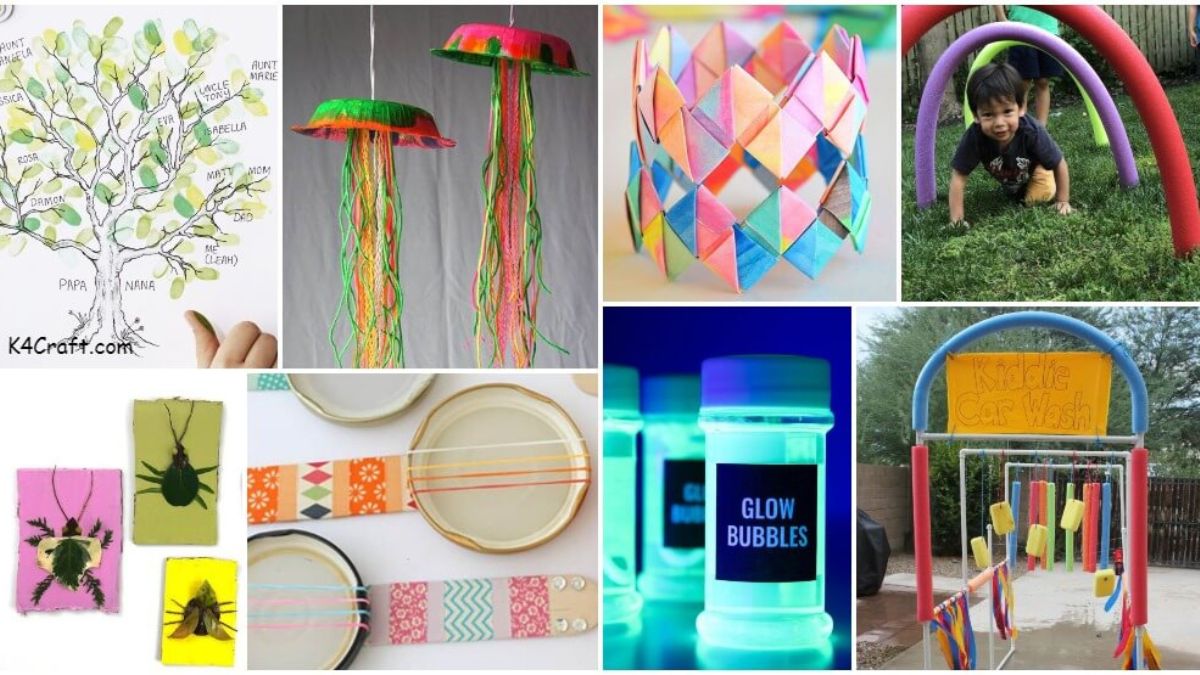HOME
5 Tips to Gather Evidence for Your Personal Injury Case in St. Louis

When involved in a personal injury case in St. Louis, gathering evidence is crucial. It will ensure you receive the compensation you deserve. Whether you’re dealing with a car accident, a slip and fall, or another type of injury, knowing how to collect and preserve evidence effectively can make all the difference.
To illustrate the importance of gathering evidence, consider these recent tragic incidents in St. Louis: According to 5 On Your Side, a car accident occurred on Saturday evening at New Castle Drive in Florissant. As a result, Gary Bozeman, 71, passed away. Virgil Shivers, 55, veered into oncoming traffic, causing the collision, and was hospitalized as a result.
Additionally, another severe accident took place when a car crashed with a truck at South 2nd Street in South St. Louis around 3:00 p.m., killing the car’s driver. The police department and experts are currently looking into what caused this accident.
These unfortunate events highlight the necessity of collecting solid evidence. It helps understand what happened and who is liable. Here are five tips for gathering evidence for your personal injury case in St. Louis:
1. Document the Scene Immediately
The moments immediately following an accident are often chaotic and stressful. But while the scene is still fresh, it is the ideal time to collect evidence. Utilize your smartphone to get detailed images and videos of the accident scene. To provide a full image of the situation, take pictures from several angles. Focus on:
- The exact location where the accident occurred
- Any vehicles involved, including license plates
- Visible injuries to yourself or others
- Property damage
- Road conditions, weather, and lighting
- Traffic signs or signals
Crime scene photography is essential. It is prioritized to provide accurate records of the scene and evidence. These records offer precise measurements and crucial details for understanding the crime’s context. Also, it helps in preserving the original scene’s integrity.
2. Gather Witness Information
According to St. Louis personal injury lawyers, witnesses can provide invaluable third-party incident accounts. If any bystanders saw what happened, ensure getting their contact information.
Additionally, obtain their email addresses, phone numbers, and names. Ask them whether they would be ready to provide you with a statement regarding what they witnessed. Their evidence may support your account of what happened. It can provide additional details that you might have missed.
If the witness is hesitant, assure them that their cooperation could be crucial. Often, witnesses help when they understand how their statement can impact your case.
3. Obtain Police and Medical Reports
Official reports from authorities and medical professionals carry weight in personal injury cases. TorHoerman Law states that reporting an accident and contacting the police are imperative. Important information will be documented in this report. The time, date, and place of the accident are among the details. It also includes the officers’ initial observations and statements from involved parties.
In a similar vein, get medical help right away, even if you think your wounds are small.
According to health-e, organized medical records provide vital patient health history. They reveal current conditions, guiding physicians in new health matters. It also links illnesses or injuries to previous diagnoses, ensuring the best course of action.
4. Preserve Physical Evidence
Physical evidence can be anything from damaged personal property to the clothes you were wearing at the time of the accident. Wright State University advises that preserving physical evidence is a crucial step. Things like tissue and fluid samples, as well as clothing, must be collected or recorded as evidence. Also, since some evidence can deteriorate quickly, it’s crucial to seek a medical exam soon.
For example, your car is an important piece of evidence if you were in an accident. Wait until the car has been completely inspected and recorded before doing any repairs. Similarly, keep any clothing or personal items that were damaged during the incident. Take photos of these items and store them in a safe place. Even seemingly minor details, like blood stains or tears in clothing, can support your accident.
5. Maintain a Detailed Personal Injury Journal
Keeping a personal injury journal is an excellent way to document the impact of your injuries. In this journal, record details such as:
- Your physical and emotional symptoms
- Pain levels and how they fluctuate over time
- Medical appointments, treatments, and prescribed medications
- Any missed workdays or activities
- How the injuries are affecting your personal and professional life
A personal injury journal provides a day-to-day account of your recovery process. It also demonstrates the extent of your suffering and inconvenience. This can be useful in proving non-economic damages. These damages include pain and suffering, which are harder to quantify.
FAQs
1. Can a personal injury lawyer help me with the compensation?
Yes! Through navigating the legal system, a personal injury attorney can assist you in obtaining compensation. Additionally, they will represent your interests and bargain with insurance providers to make sure you get a just financial recovery.
2. Which kinds of evidence are most crucial to gather at the scene of a St. Louis personal injury accident?
Important documents include witness accounts, police reports, and scene photos. To strengthen your case, take pictures of any property damage, injuries, and any signs or road conditions.
3. In what ways might medical records support a St. Louis personal injury claim?
Medical documents provide a clear connection between your health and the accident, which is essential for demonstrating damages. They also describe the extent of your injuries and the treatments you received.
To gather evidence for a personal injury case in St. Louis, document the scene, collect witness information, obtain official reports, preserve physical evidence, and keep a personal injury journal. Seek advice from a St. Louis personal injury attorney to make sure you have all required evidence. This approach increases your chances of fair compensation and a favorable outcome.
HOME
DIY Projects with Prizmatem: Fun Ideas for Every Skill Level

Introduction to Prizmatem and its uses
Are you ready to unleash your creativity and transform everyday items into stunning works of art? Prizmatem is here to guide you on an exciting journey through the world of DIY projects. This versatile material offers endless possibilities for crafting, whether you’re a seasoned pro or just starting out. With its unique properties, Prizmatem allows you to explore new techniques while showcasing your personal style. From simple beginner-friendly ideas to complex advanced creations, there’s something for everyone in this vibrant realm of DIY magic. Grab your supplies and let’s dive into some fun projects that will inspire both novices and experienced crafters alike!
Easy DIY Projects with Prizmatem for Beginners
Starting with Prizmatem is a delightful adventure. Its versatility makes it perfect for beginners eager to explore DIY projects.
One simple idea is creating custom bookmarks. Just cut the Prizmatem into desired shapes and decorate them with your favorite colors or patterns. They make great gifts, too!
Another fun project involves making coasters. Slice the material into squares or circles, then embellish them using paint or markers. These personalized coasters will brighten up any coffee table.
For those who love nature, try crafting wall art with pressed flowers between layers of Prizmatem. The result? A stunning piece that brings a bit of outdoor beauty inside.
These easy projects not only build skills but also offer instant gratification as you see your creativity come to life!
Intermediate DIY Projects with Prizmatem: Taking It Up a Notch
Ready to elevate your crafting game? Intermediate DIY projects with Prizmatem are perfect for those looking to challenge their skills.
Consider creating custom wall art. Use various colors and textures of Prizmatem to craft unique pieces that reflect your personality. Layering different shapes can add depth and intrigue.
Another exciting project is making decorative planters. Transform basic pots by wrapping them in vibrant strips of Prizmatem, giving your plants a fresh new look. This adds flair while showcasing greenery beautifully.
How about designing a personalized photo frame? Cut out fun shapes from Prizmatem and glue them around an existing frame for an artistic twist on displaying memories.
With these projects, you’ll gain confidence as you explore the versatility of this material. Embrace creativity, enjoy the process, and watch your skills flourish!
Advanced DIY Projects with Prizmatem: Challenging and Rewarding Creations
For those ready to push their creative boundaries, advanced DIY projects with Prizmatem offer an exciting challenge. Imagine crafting intricate designs that dazzle the eye and transform spaces.
One captivating idea is creating custom light fixtures. The unique properties of Prizmatem allow you to experiment with shapes and colors, casting beautiful patterns across your walls.
Another option is building functional art pieces like a stylish coffee table or wall shelves. This not only showcases your craftsmanship but also adds a personal touch to your home decor.
Consider tackling outdoor projects too. A garden trellis adorned with Prizmatem accents can elevate any landscape, blending artistry with nature seamlessly.
The journey of working on these creations will enhance both skillset and confidence as you discover how versatile this material truly is. Each project becomes a testament to what can be achieved when creativity meets determination.
Creative Ways to Incorporate Prizmatem into Home Decor
Prizmatem opens up a world of creative possibilities for home decor. Its unique properties make it perfect for adding flair to any space.
Consider using Prizmatem in wall art. Create geometric designs or abstract pieces that catch the light beautifully. The play of colors can transform a simple room into an artistic haven.
Table centerpieces are another fantastic option. Mix Prizmatem with natural elements like wood and stone for an eye-catching contrast. This adds elegance while maintaining a warm vibe.
Don’t overlook lighting! Incorporating Prizmatem lamps can create stunning effects as they cast colorful patterns around your space, bringing warmth and creativity together seamlessly.
For those who love plants, try creating custom pots from Prizmatem materials. These vibrant planters will set off greenery perfectly, making your indoor garden even more inviting.
Think about coasters or trivets made from Prizmatem—functional yet stylish additions that spark conversation at gatherings.
Tips and Tricks for Working with Prizmatem
When working with Prizmatem, preparation is key. Always start by gathering all your tools and materials beforehand. This will save you time and keep your workspace organized.
Use a sharp utility knife or scissors for clean cuts. A precise cut can make all the difference in achieving a polished look for your projects.
Don’t rush through the drying process if you’re using adhesive. Allow ample time between each layer to ensure everything bonds properly.
Experiment with colors and textures to find combinations that resonate with your style. Mixing different shades of Prizmatem can create stunning visual effects.
Embrace mistakes as part of the creative journey. Sometimes an unexpected twist can lead to unique results you never envisioned!
Conclusion: The endless possibilities of DIY projects with
The beauty of working with Prizmatem lies in its versatility. Whether you are a beginner looking to dabble in DIY projects or an experienced crafter seeking complex challenges, there’s something for everyone.
Imagine transforming simple spaces with unique decor pieces made from Prizmatem. From wall art to functional items, the only limit is your creativity. Each project allows you to express yourself while honing your skills.
As you explore different techniques and styles, you’ll find new inspirations waiting around every corner. So gather your materials and let your imagination run wild—there’s no telling what amazing creations await when working with this remarkable material!
HOME
Rebuilding Your Future: A Guide To Starting Over After Tax Troubles

Tax troubles can be a daunting obstacle, impacting not only your current financial situation but also your prospects. When IRS issues arise, they can feel insurmountable, leaving you uncertain of where to turn or how to begin anew. But understanding your options and taking informed steps can make all the difference. Rebuilding your financial stability after such an event requires knowledge, support, and a solid plan of action. Keep reading to explore how you can overcome these challenges and pave the way to a more secure financial future.
Understanding Tax Troubles and Their Impact on Personal Finance
Individuals facing tax issues often experience a ripple effect in their finances. The primary concern starts with outstanding taxes owed, which may accumulate interest and penalties over time. This can lead to a significant burden that interrupts your ability to meet other financial obligations and plan for the future.
Moreover, tax problems can damage your credit score, create legal repercussions, and result in wage garnishments or liens against your property. It’s a cycle that can be difficult to break without appropriate intervention, making it critical to seek guidance promptly. The stress and complexity involved in tax troubles require a composed approach and a clear understanding of one’s financial situation.
For those who find themselves in tax-related difficulties, the feeling of isolation can be overwhelming. However, it’s important to remember that help is available. Whether through government relief programs or by finding a tax settlement near me, resources are at your disposal to navigate these troubled waters.
Adopting Smart Tax Practices to Prevent Future Issues
One of the best ways to prevent future tax difficulties is to adopt smart tax practices. This includes staying informed about tax laws and deadlines, keeping thorough records of income and deductible expenses, and ensuring that taxes are filed accurately and on time. Making mistakes on tax returns or missing deadlines can lead to unnecessary complications, including penalties and audits.
Utilizing the services of a professional tax preparer or investing in reputable tax software can minimize errors. A professional can offer personalized advice and help to maximize deductions and credits you may not be aware of. For many, the cost of these services is outweighed by the savings gained and the peace of mind provided.
Education can also be a formidable defense against tax issues. For example, pursuing a communications degree program can enhance one’s ability to effectively manage and convey financial matters, ensuring clarity in all tax-related communications. Being well-versed in tax legislation and communication strategies can serve as valuable tools in safeguarding against future tax problems.
Setting Realistic Goals and Creating a Financial Recovery Plan
Planning is crucial in overcoming financial distress caused by tax issues. Setting realistic goals forms the foundation of an effective financial recovery plan. Engage in a thorough review of your financial status, including income, expenses, debts, and assets, to outline a strategy that reflects your capabilities and limitations.
Budgeting plays a central role in financial recovery, allowing for careful tracking of expenses and ensuring that funds are allocated towards clearing tax debts. It may also reveal opportunities for cutting costs and saving, which can expedite the repayment process. Staying flexible and willing to adjust your budget and goals over time is equally important as your financial situation evolves.
Creating a debt repayment plan is also essential, and often involves prioritizing debts according to interest rates and other factors. Communication with creditors and the IRS is key; keeping them informed of your situation and your efforts to resolve outstanding debts can sometimes lead to more favorable terms or assistance.
Embracing a Fresh Start: Building a Stable Financial Future Post-Tax Trouble
Emerging from tax troubles offers an opportunity for a fresh start and the chance to build a more stable financial future. Learning from past experiences and making mindful decisions can help prevent repetitive cycles of tax-related issues. It’s a time to refocus on goals, reassess priorities, and put into practice the lessons learned during your journey to tax resolution.
Investing in your financial literacy is an ongoing process that nurtures a healthier approach to personal finance management. From understanding fundamental money management principles to staying alert to changes in tax regulations, continuous learning fuels informed decision-making and a readiness to take on financial challenges with confidence.
Overall, facing tax troubles can be a challenging period in anyone’s life, but with the right approach and a guiding hand, it can be overcome. By understanding your situation, exploring resolution options, setting attainable goals, and adopting better tax habits, you set the stage for a future unburdened by past tax issues. With patience and perseverance, a stable financial future is within reach, allowing you to embrace the fresh start you deserve.
HOME
The Prevalence of Alzheimer’s Disease

As populations around the globe age, the prevalence of Alzheimer’s disease continues to grow, affecting millions of families and putting pressure on healthcare systems. This degenerative brain disorder leads to memory loss, cognitive decline, and ultimately, loss of independence. Societal understanding of Alzheimer’s has expanded, yet many aspects of this condition remain enshrouded in mystery. This article will delve into the magnitude of its impact, the signs and symptoms, and advancements in research and treatment. Keep reading to uncover the complex world of Alzheimer’s disease and the ongoing quest for knowledge and a cure.
Understanding the Impact of Alzheimer’s Disease Worldwide
Alzheimer’s disease stands as a significant public health challenge with an extensive impact on individuals, families, and societies across the world. As the most common form of dementia, it not only strips away memory and cognitive abilities but also poses an enormous emotional and financial burden on caregivers. The complexity of the disease complicates issues of diagnosis, care, and treatment, making it a priority area for global health policy.
Demographical shifts toward an older population have seen the rates of Alzheimer’s escalate, with estimates indicating a rising trend over the coming decades. The disease is not limited by geography or economics, affecting people in developed and developing nations. Yet, its prevalence and the quality of care available can vary greatly, often influenced by a country’s healthcare infrastructure and resources dedicated to geriatric care.
In response to the growing need for solutions, international bodies and local governments are increasingly focusing on Alzheimer’s research and support systems. Organizations worldwide run awareness campaigns, provide information for patients and caregivers, and lobby for increased research and support services funding. These efforts underline the critical need for a global approach to tackle this ever-present issue.
For those curious about how common Alzheimer’s is, current statistics illuminate the widespread nature of the ailment and the urgency for expanded awareness and improved care strategies. A deeper understanding of the disease’s prevalence helps to catalyze advancements in early diagnosis and management, potentially altering its trajectory on a societal level.
Examining the Risk Factors and Genetics Behind Alzheimer’s Disease
While the exact cause of Alzheimer’s is yet to be fully understood, several risk factors have been identified that increase the likelihood of developing the disease. Age is the single most significant risk factor, with the chances of developing Alzheimer’s rising dramatically as individuals grow older. However, aging alone does not mean one will certainly develop the condition.
Genetics also plays a notable role in an individual’s risk for Alzheimer’s, particularly when considering family history. Specific genes, such as the APOE-e4 allele, have been associated with an increased risk of Alzheimer’s. Research continues to explore how genetics intersect with environmental and lifestyle factors to impact the likelihood and progression of the disease.
Lifestyle factors and health issues like heart disease, stroke, high blood pressure, and diabetes may be linked to Alzheimer’s. Ongoing research explores whether exercise, nutrition, and cognitive training can help delay its onset or progression. Public health efforts now stress overall wellness to prevent the disease.
While there is currently no definitive method to prevent Alzheimer’s, understanding the risk factors empowers individuals to seek appropriate screening and take actions that may contribute to brain health. Promoting education about these factors allows society to support early identification and intervention that can make a substantial difference in the lives of those affected.
Current Trends in Alzheimer’s Disease Diagnosis and Treatment
The landscape of Alzheimer’s disease diagnosis and treatment has evolved significantly in recent years, thanks in part to better imaging technology, biomarkers, and a growing understanding of the disease. Diagnosis has traditionally relied on clinical assessments, but the field is moving toward more precise methods, including brain scans and cerebrospinal fluid analysis, that can identify signs before symptoms appear.
Treatment for Alzheimer’s has primarily focused on managing symptoms, as no cure currently exists. Medications such as cholinesterase inhibitors and memantine can help slow down cognitive decline for some patients. Additionally, non-pharmacological interventions, like social engagement and cognitive therapy, are strongly emphasized, which can also provide significant benefits.
Research into disease-modifying therapies is underway, with a drive to find treatments that can halt or reverse the progression of Alzheimer’s. This research includes trials on drugs targeting beta-amyloid plaques, one of the disease’s hallmarks, as well as efforts to reduce tau pathology, another key feature of Alzheimer’s. These developments signal a cautious optimism in the scientific community.
Altogether, the growing prevalence of Alzheimer’s disease underscores the urgent need for continued research, early detection, and accessible treatment options. As science advances and awareness increases, there is hope that a deeper understanding of the disease will lead to improved care and, ultimately, a cure.
-

 FASHION11 months ago
FASHION11 months agoElegant Winter Party Style: Trendy Long-Sleeve Dresses and Essential Hair Care Tips
-

 HOME11 months ago
HOME11 months agoThe Impact of thejavasea.me Leaks AIO-TLP Users: A Comprehensive Guide
-

 BUSINESS10 months ago
BUSINESS10 months agoHOW TO SHOP GOODWILL OUTLET STORE
-

 SKINCARE&BEAUTY5 months ago
SKINCARE&BEAUTY5 months agoCeylan Eye Cream Reviews: Real Results from Real Users
-

 HOME5 months ago
HOME5 months agoTributePrintedPics Review: A Deep Dive into Quality, Design, and Customer Experience
-

 CULTURE5 months ago
CULTURE5 months agoUncuymaza Unveiled: The Cultural Significance Behind the Craft
-

 LIFESTYLE4 months ago
LIFESTYLE4 months agoDiscovering Luuxly.com: Your Ultimate Guide to Luxury Lifestyle
-

 TECHNOLOGY5 months ago
TECHNOLOGY5 months agoztec100.com: Your Ultimate Guide to Cutting-Edge Tech Solutions
